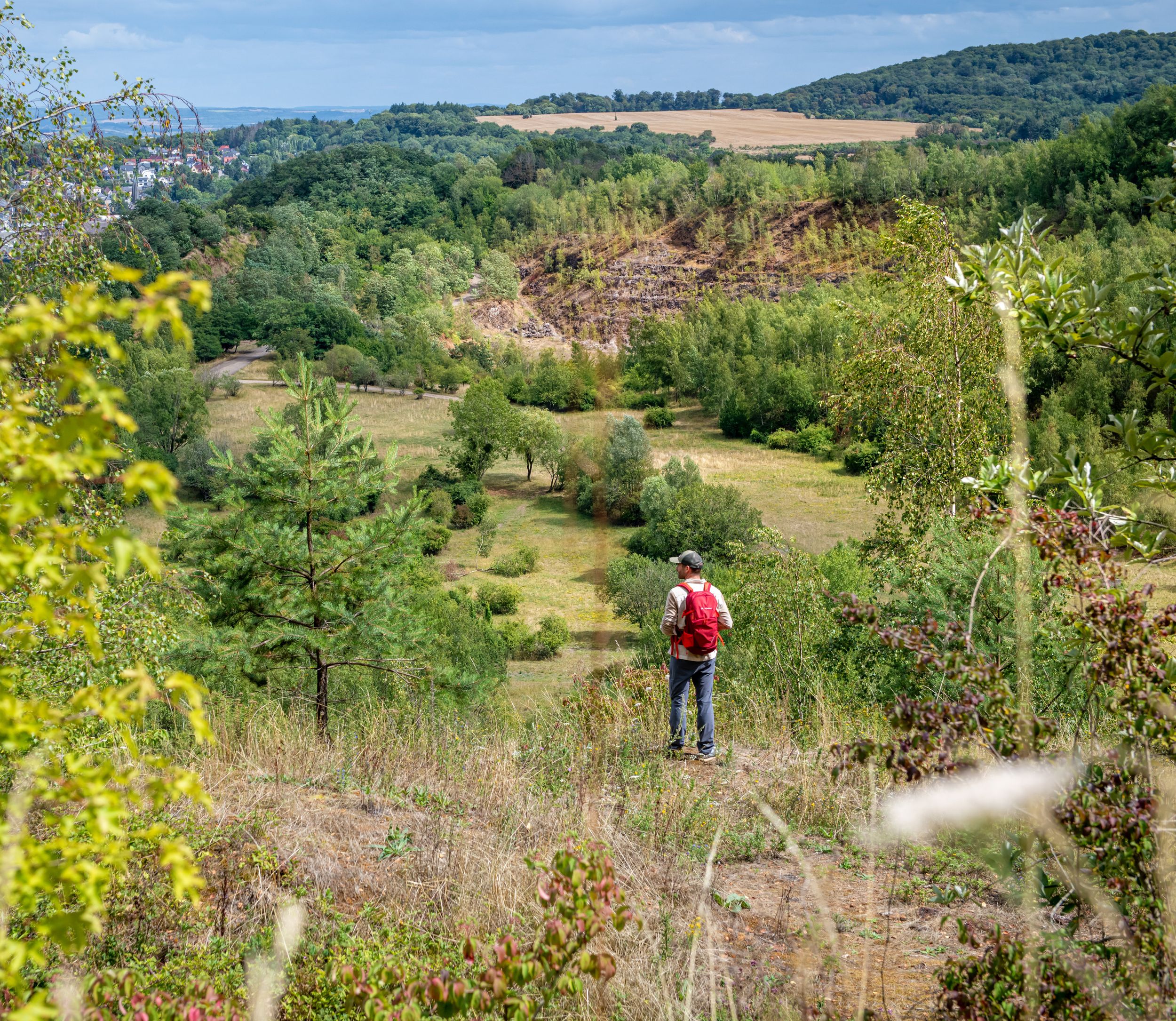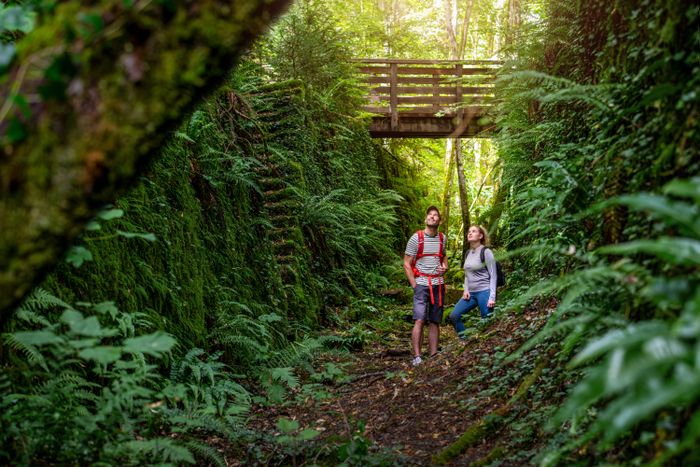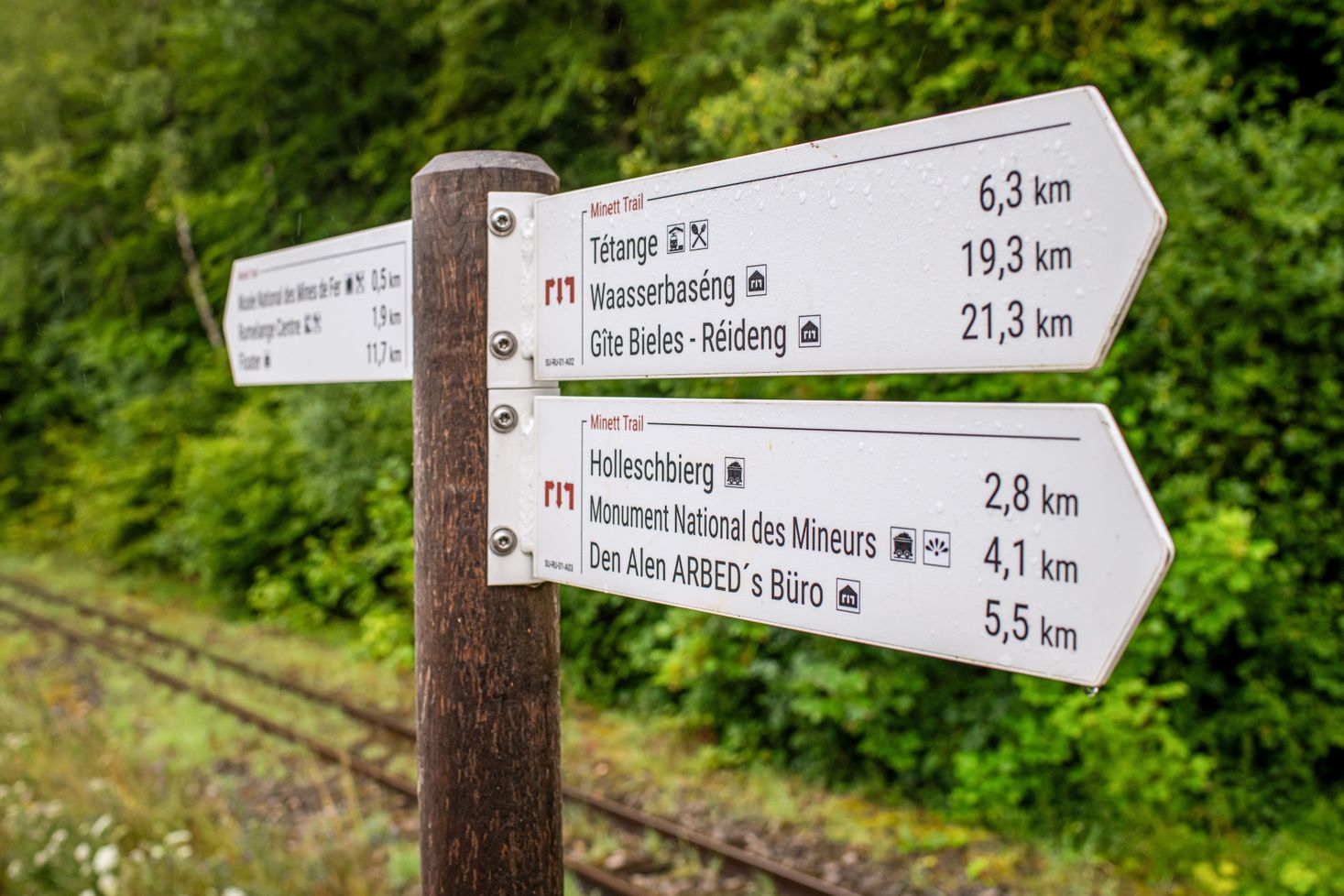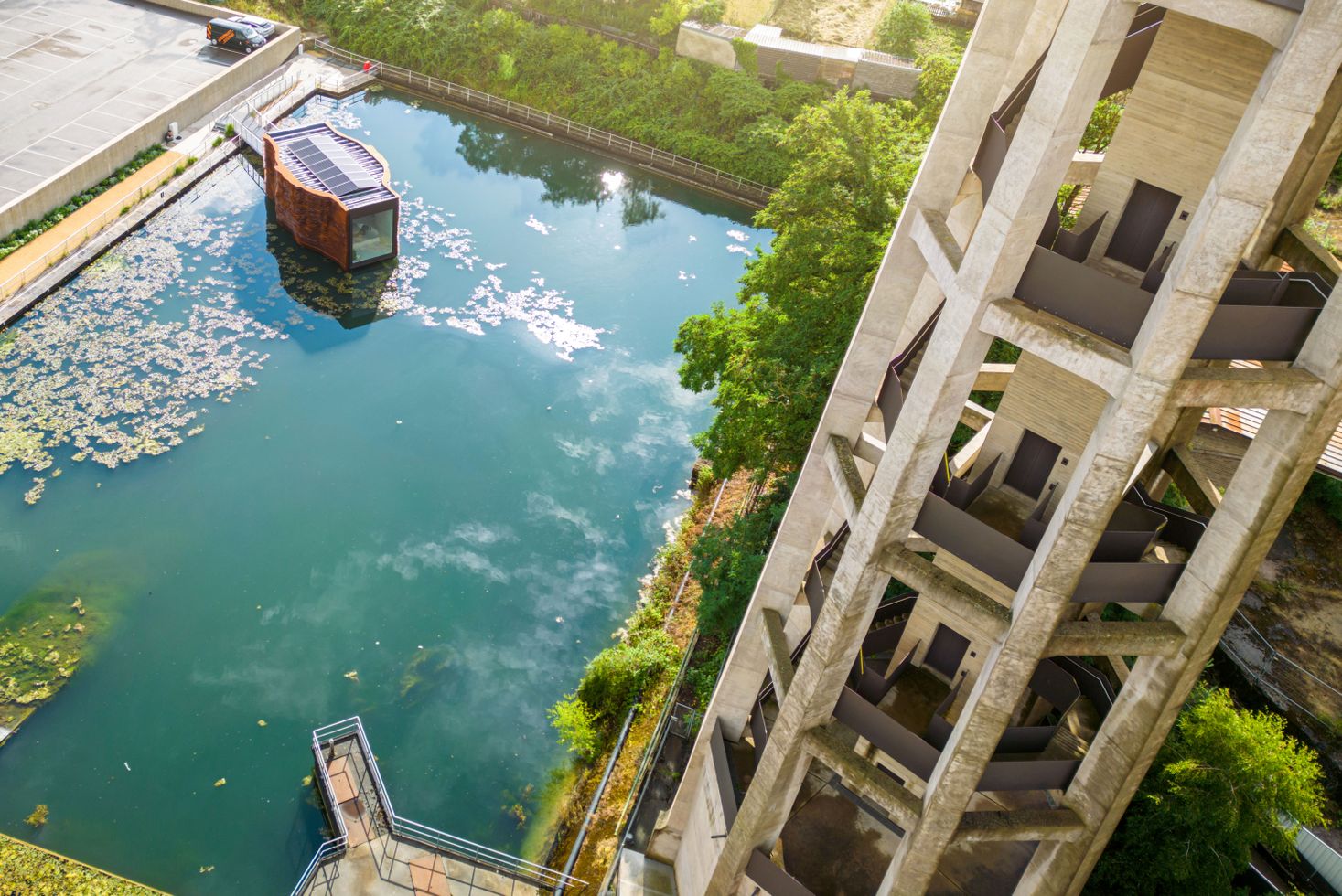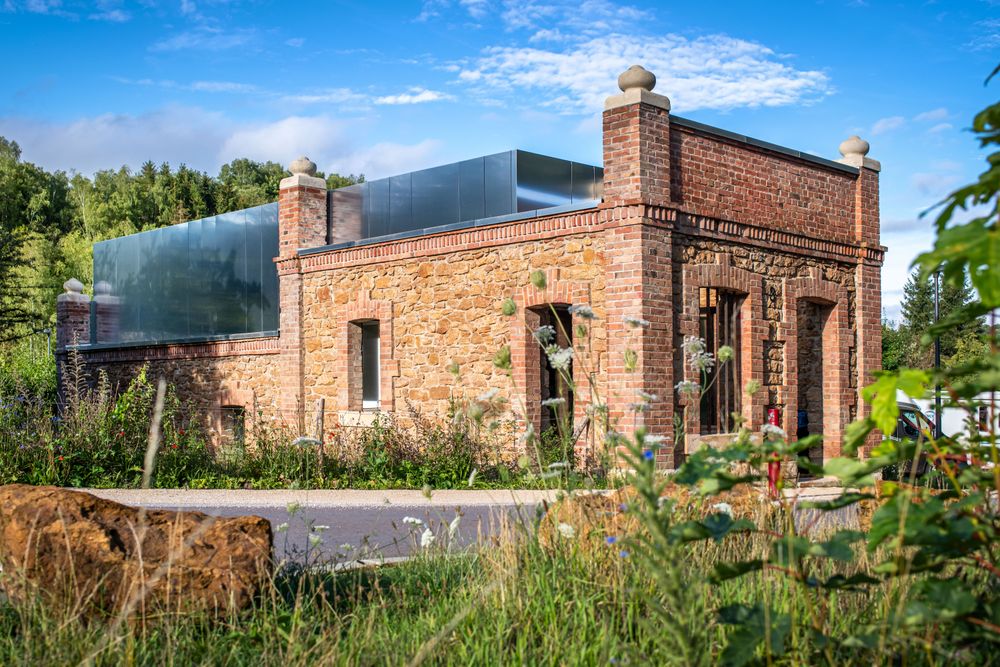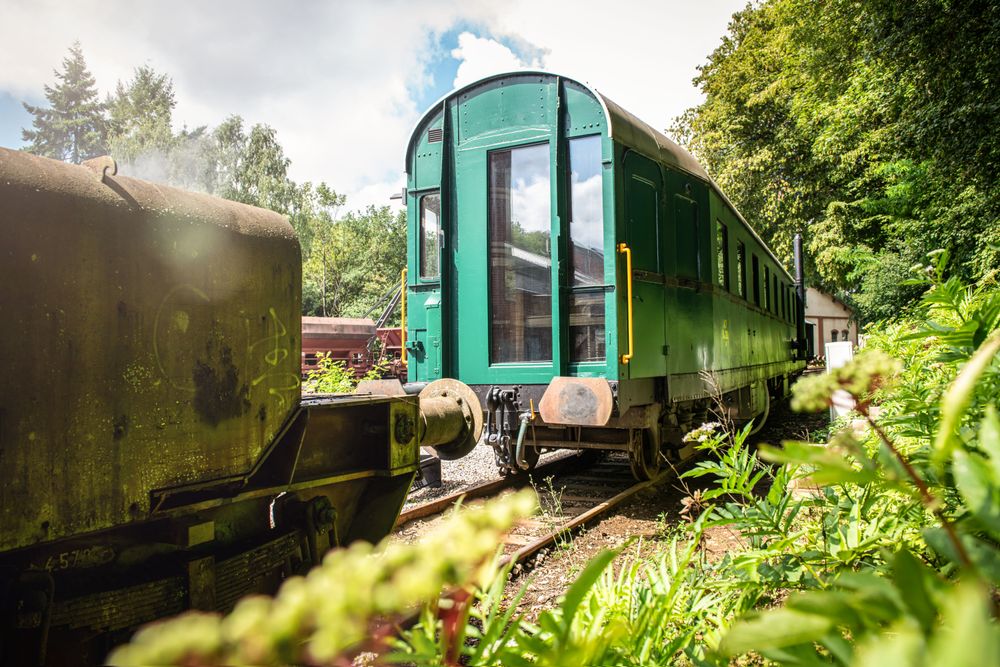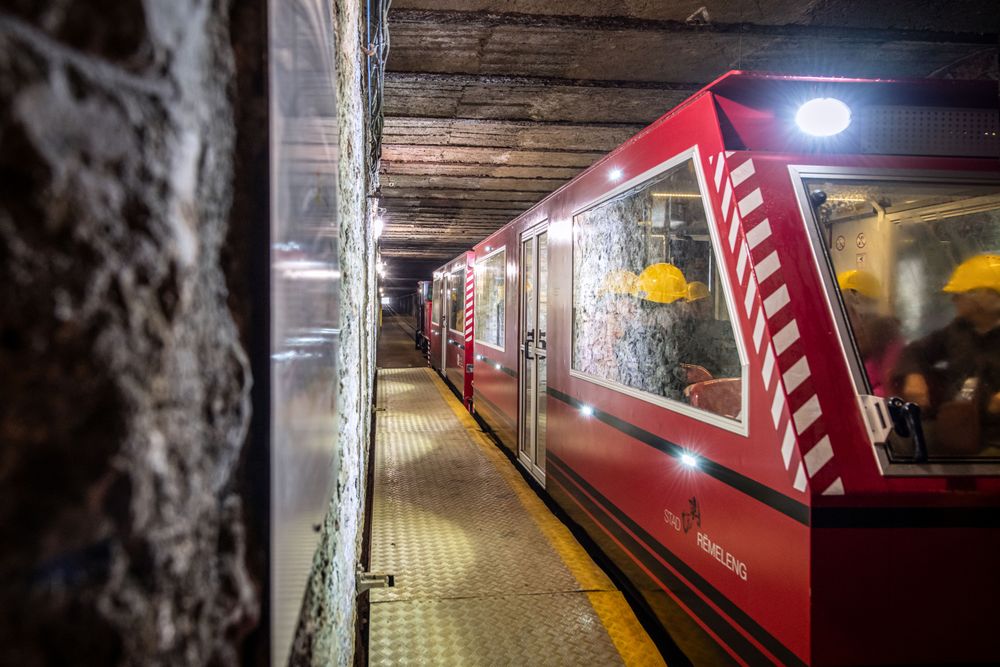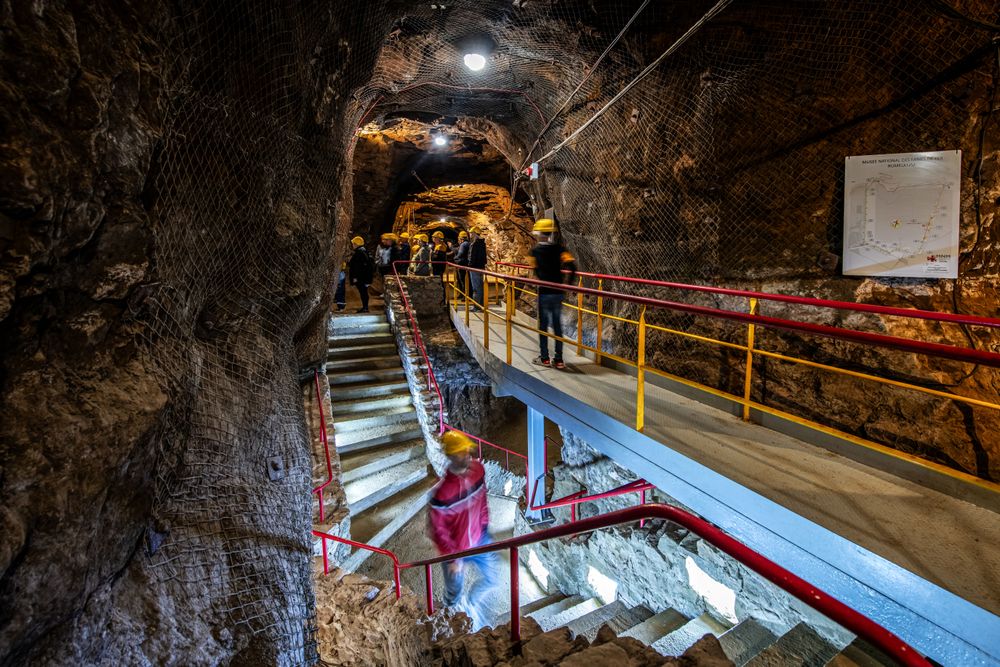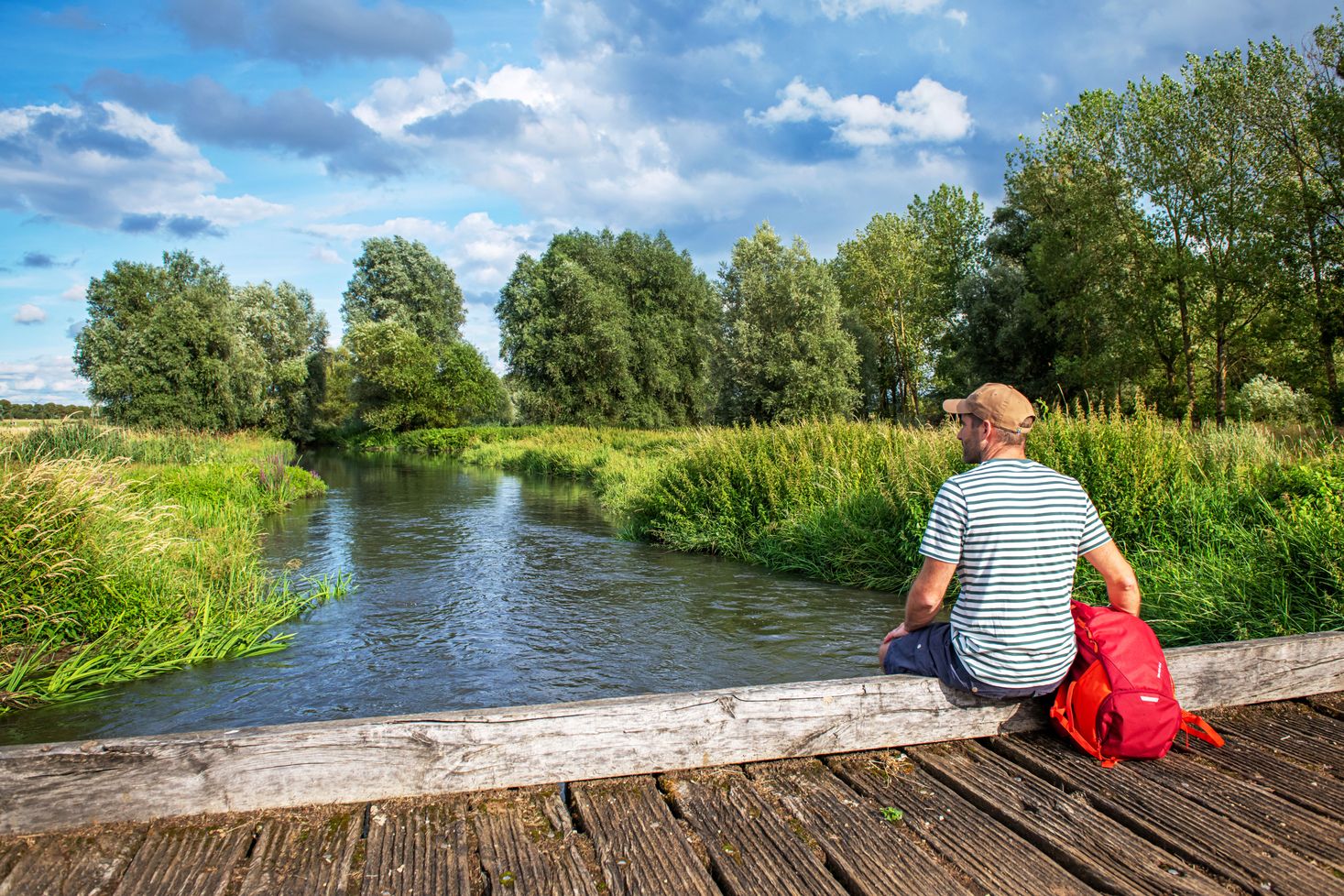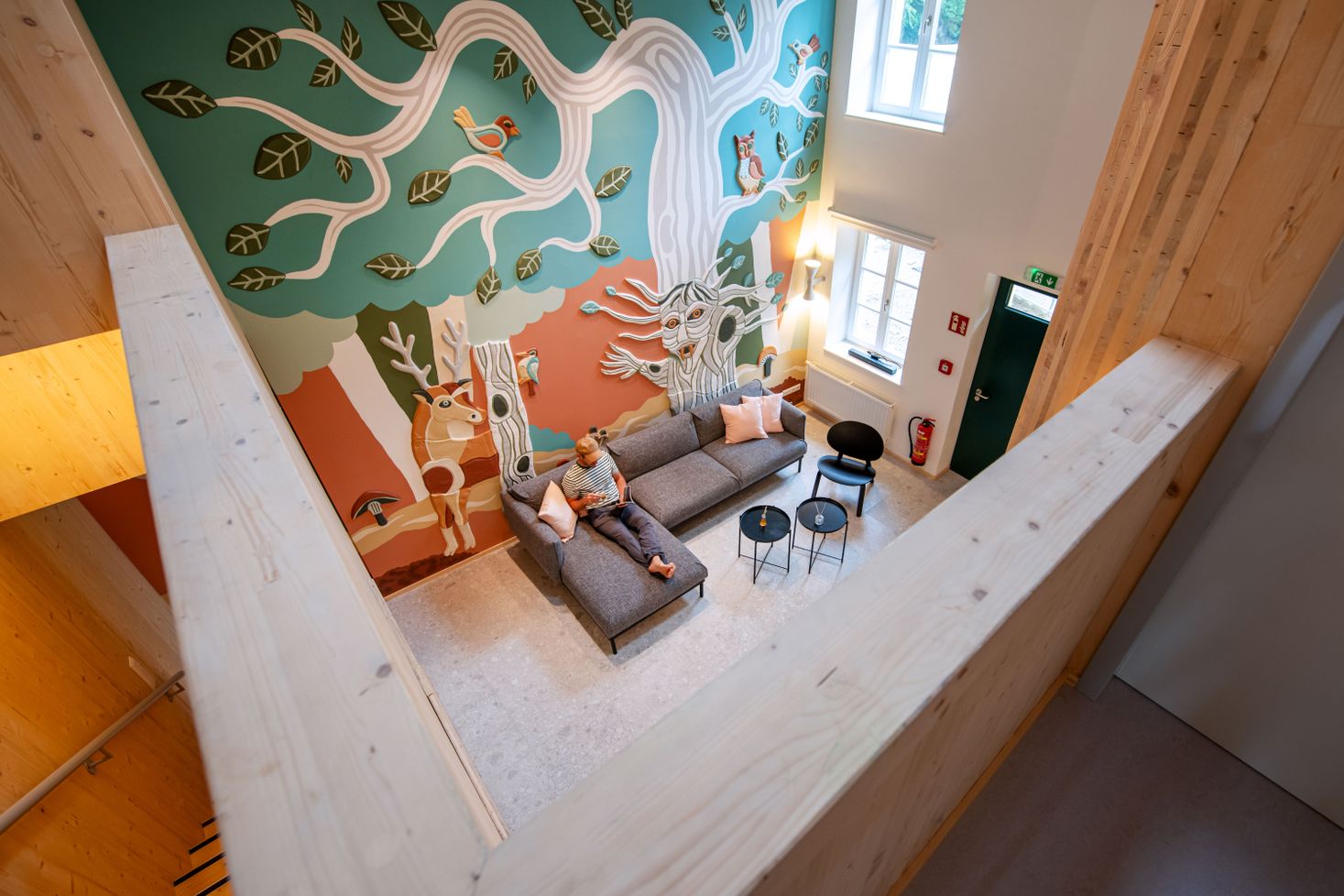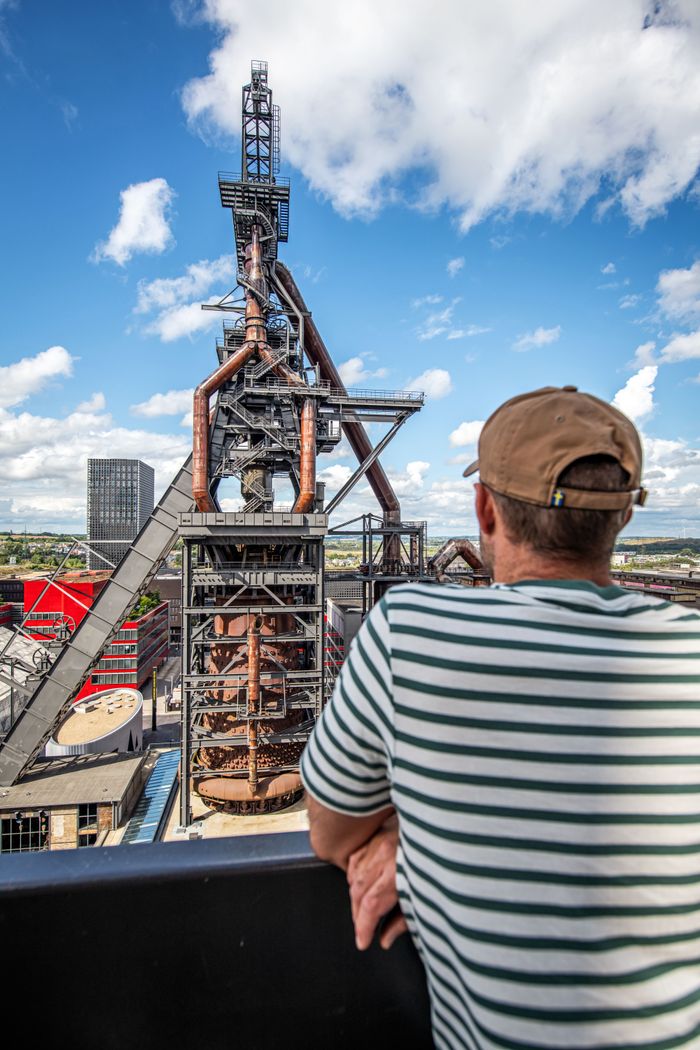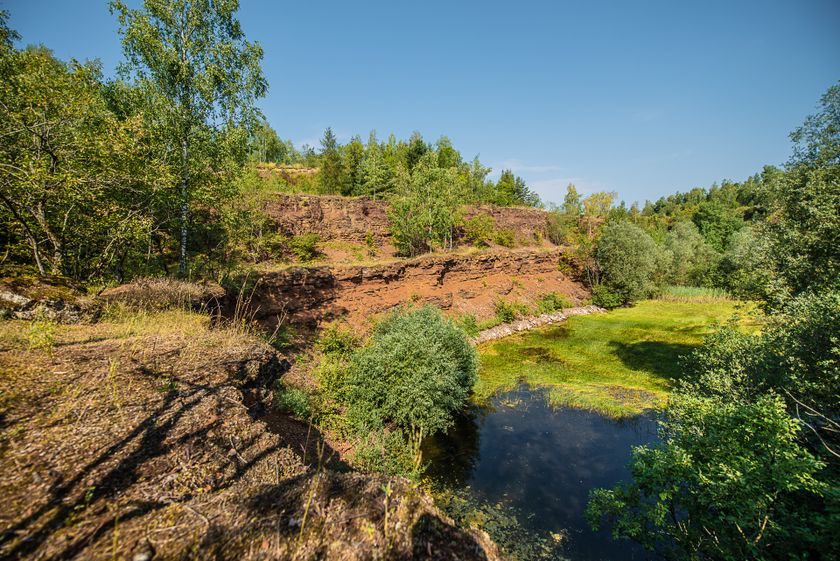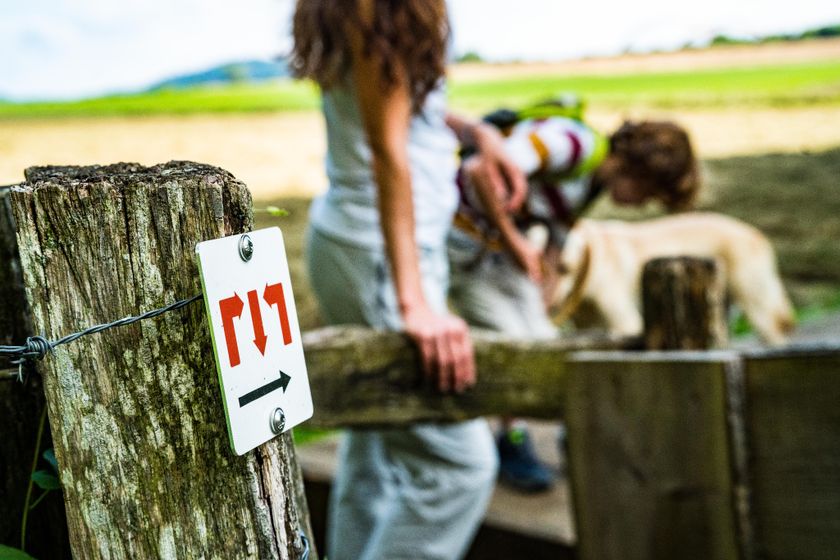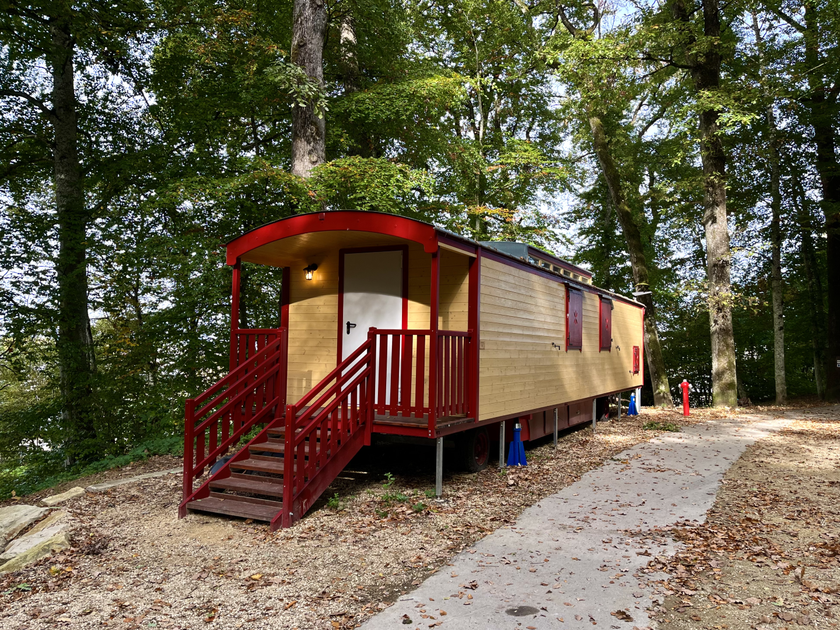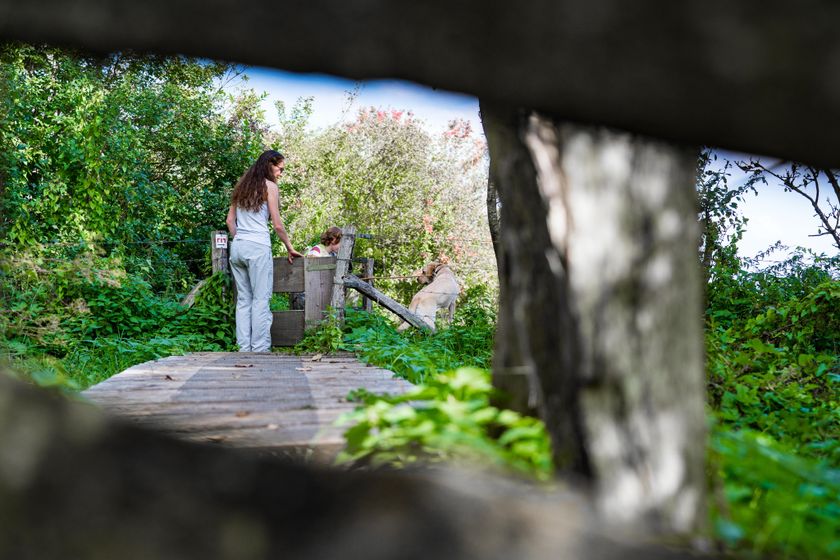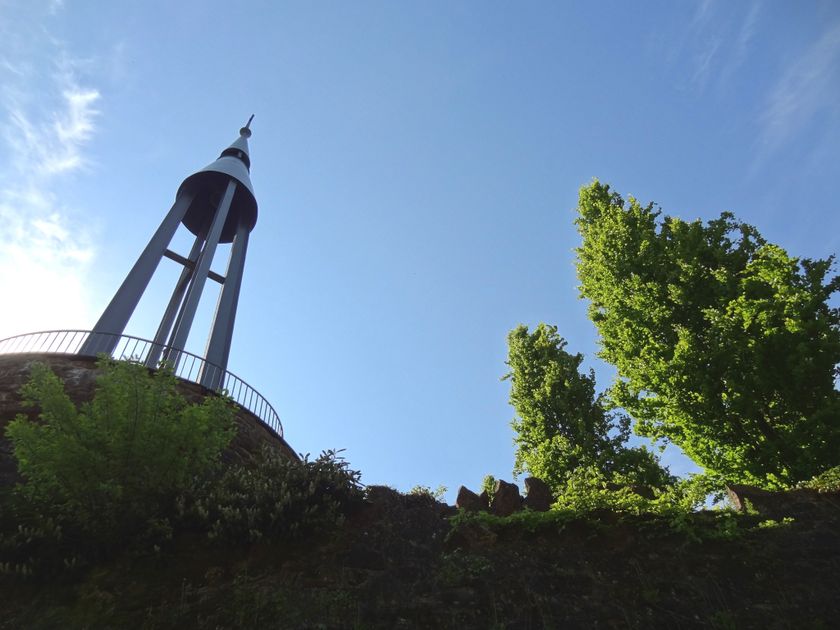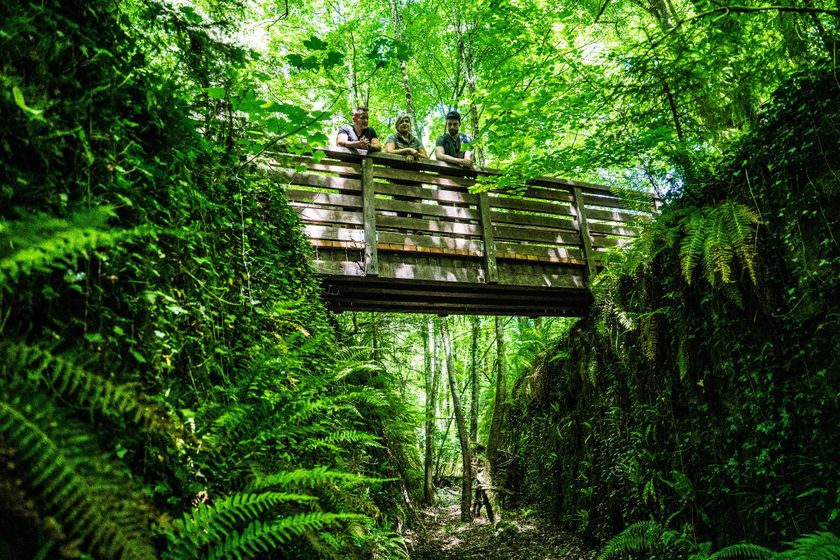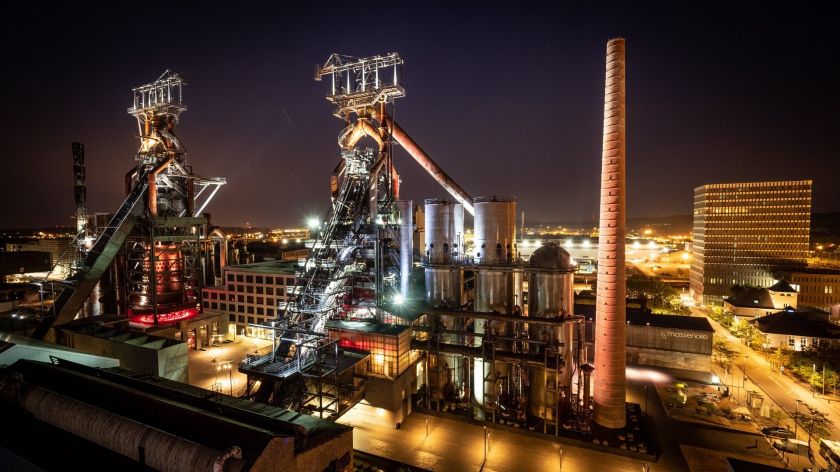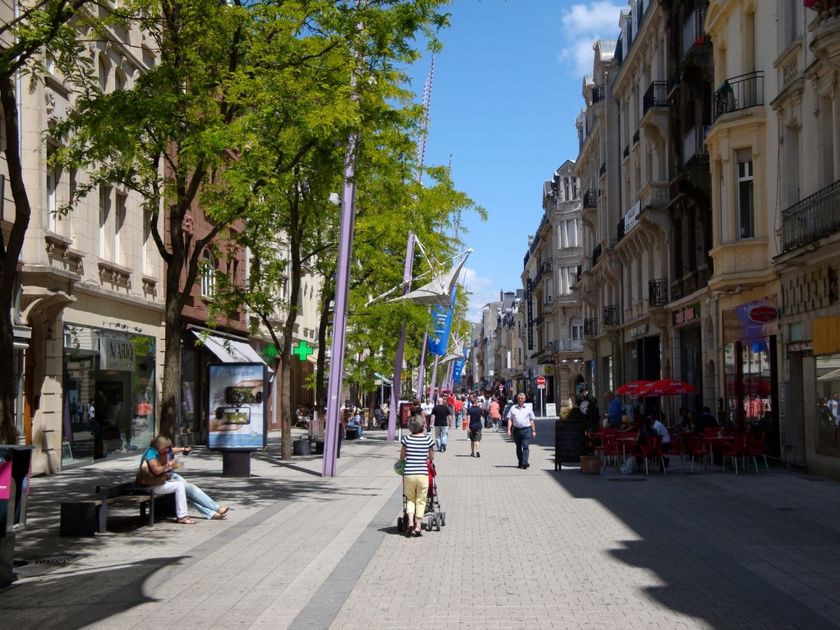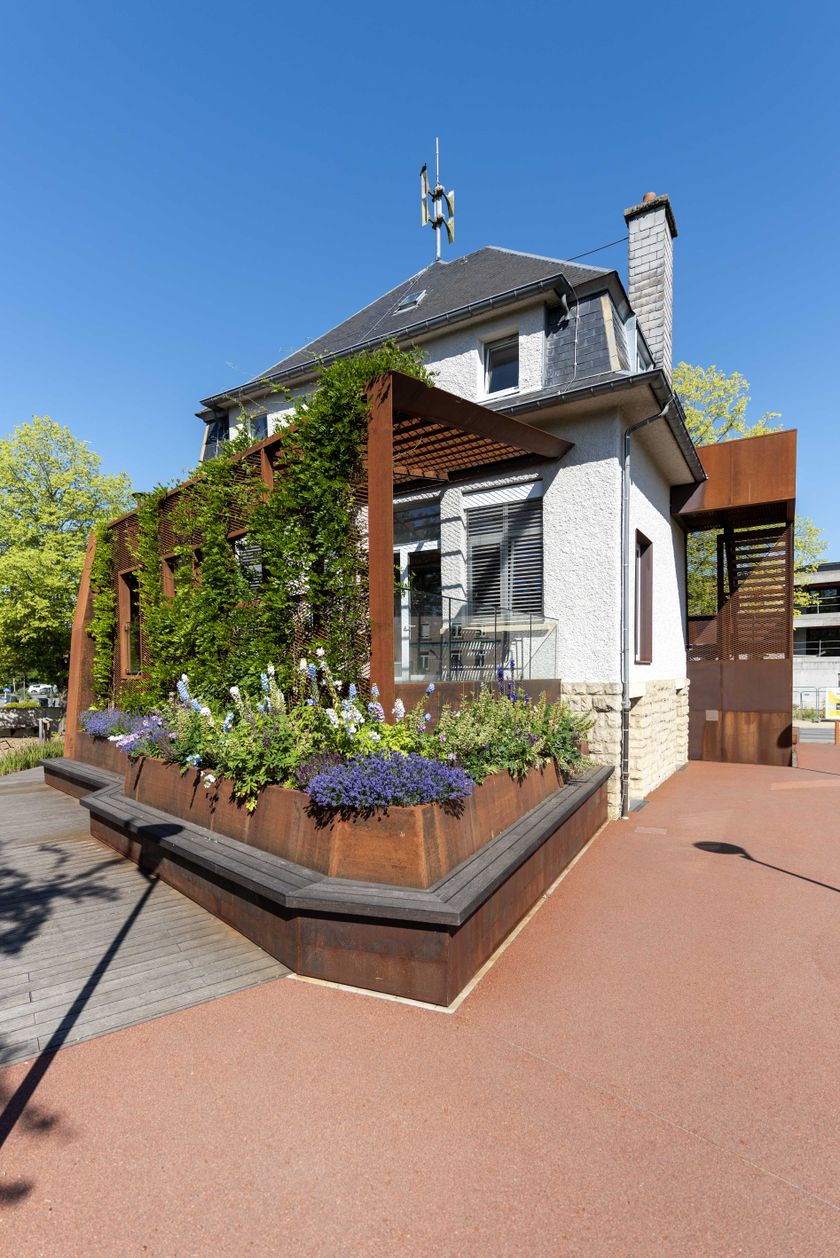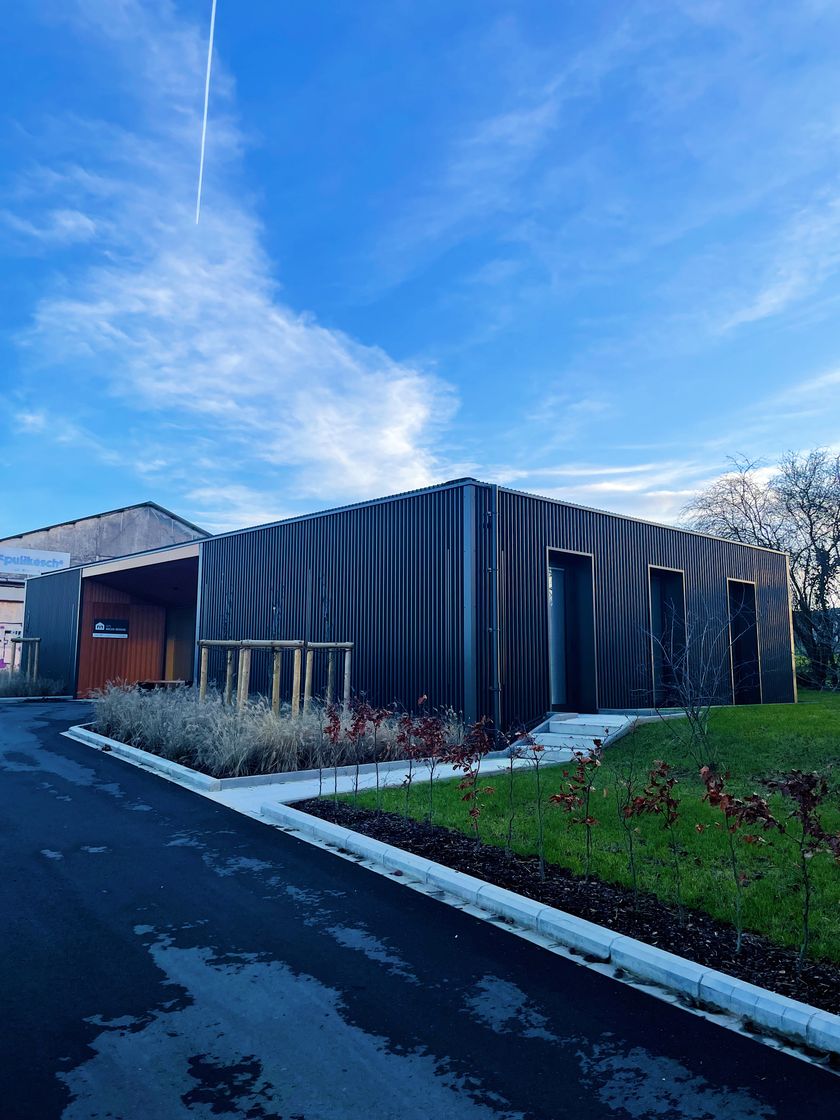The path of change
Showcasing the scenic beauty of Luxembourg’s southern region, the Minett Trail is sure to capture the hearts of nature and history lovers alike. The trail winds its way over 90 kilometres through the former heartland of the steel industry. A hiking adventure into Luxembourg’s industrial past and through its natural beauty.
The Dudelange water tower appears like a beacon before us, showing us the way. Visible from afar, it’s the tacit emblem of the Neischmelz brownfield site. At its feet lies a pond with a “Kabaisercher”, a kind of hiking lodge designed specifically for the Minett Trail. This is where we’ll spend the night. It looks like a houseboat floating between water lilies and ducks, a work of art that you can live in and which beckons to be explored. We go in. The walls are made of layered wooden panels made to resemble the rock face of an open mine. Huge windows offer a view of the water tower. Modern, inspiring and cosy. Unfortunately, we can’t stay yet. The day is still young and we have a lot to do.
